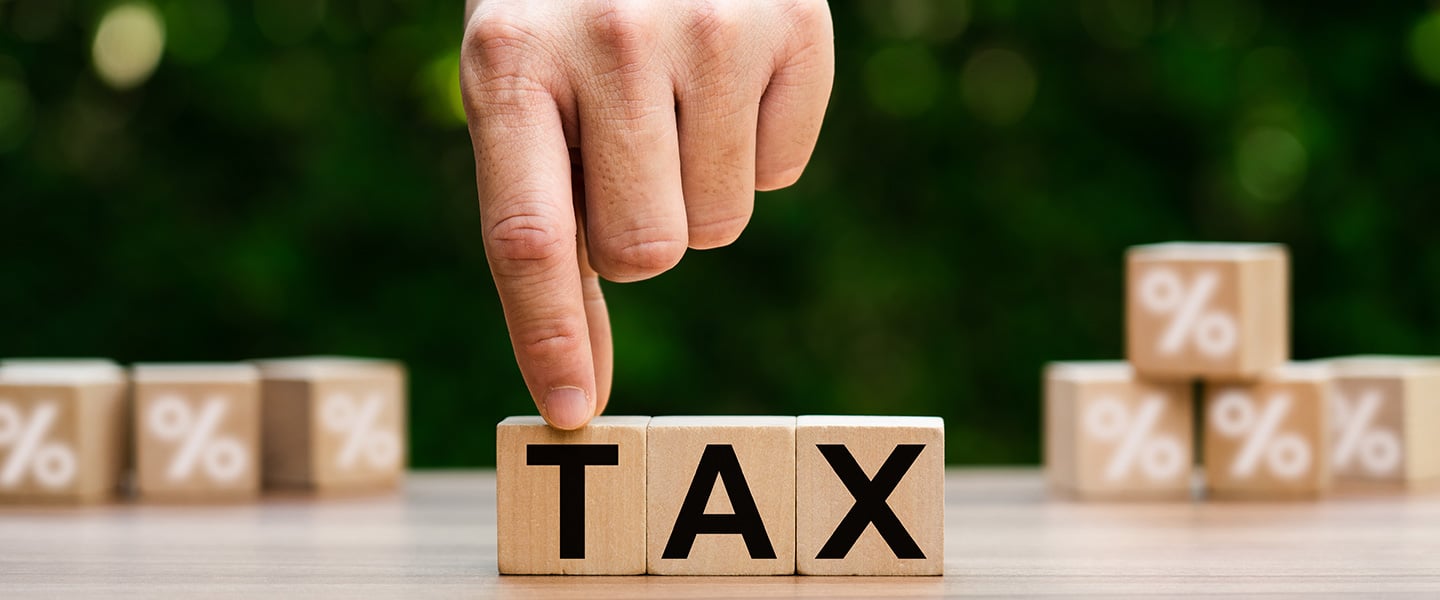-
Digital Natives
Unlock growth with Grant Thornton Bharat's Digital Natives solutions. Customised support for tech-driven companies in healthcare, gaming, and more.
-
Business Consulting
Our business consulting specialists offer a comprehensive blend of strategic advisory services. We assess the business, industry, operating model, synergy, skill sets and vision of the organisation and recommend the way forward
-
Digital Transformation Services
Grant Thornton’s digital transformation services help traditional businesses digitalise their business models with cloud technology, IoT consulting, app development and more DigiTech solutions.
-
Human Capital Consulting
Our Human Capital Consulting team harnesses technology and industry expertise to assist in constructing adaptable organisations with transparency, fostering productive and value-driven workforces, and inspiring employees to engage meaningfully in their tasks.
-
Production Linked Incentive Scheme
Production-linked Incentive Scheme by the Indian government is aimed at boosting manufacturing. Grant Thornton Bharat offers varied services across sectors to help businesses avail of this scheme.
-
Public Sector Advisory
Our Public Sector Advisory team has focused streams, aligned with the core priorities of the Government of India. We are responsible for providing innovative and customized technical and managerial solutions.
-
Tech Advisory
We have amalgamated Digital Transformation, IT Advisory & Information Management and Analytics into a new offering, DigiTech.
-
Direct Tax services
Our tax specialists offer a comprehensive blend of tax services, tax litigation, regulatory and compliance services, helping you navigate through complex business matters.
-
Indirect Tax Services
Get tax services by leading tax firm Grant Thornton India. Our indirect tax services include consulting, compliance and litigation services for corporate, international and transaction tax
-
Transfer pricing services
Our transfer pricing services experts provide a range of services from provision of APA services to handling large global assignments including Country by Country reporting.
-
US Tax
At Grant Thornton, we help individuals and dynamic companies deal with US tax laws, which are one of the most complicated tax legislations across the world.
-
Financial Services - Tax
Best financial advisory services, tailored for small and large businesses by the experts having comprehensive knowledge of domestic laws and access to multifaceted tools to provide a valuable results.
-
Financial Reporting consulting services
Our experts have significant hands-on experience in providing IFRS/US GAAP services, end-to-end solutions and support services to fulfil financial reporting requirements.
-
Fund accounting and financial reporting
International operations often lack standardisation and have varied local reporting formats and requirements. Our experts can offer proactive insights, practical guidance, and positive progress and help meet regulatory timeframes.
-
Compliance and Secretarial Services
Our experts can assist in overhauling the entire compliance machinery of the organisation through evaluation of the applicable statutory obligations, monitoring of adequate governance controls, reporting and providing ongoing support.
-
Global People Solutions
As businesses transcend borders, both domestic and global considerations need equal attention. Our interim CFO and financial controller support services help organisations meet the business vision.
-
Finance and accounting outsourcing
Our accounting experts assist organisations in managing their accounting and reporting. Our dedicated Integrated Knowledge and Capability Centre (IKCC), allows us to service both the domestic and global markets efficiently and cost-effectively
-
Compliance Management System
We have automation solutions for you that will allow meeting government requirements and remain diligent, which when failed, can lead to penalties and loss in revenue.
-
IKCC: Grant Thornton's Shared Service Centre
The India Knowledge and Capability Centre (IKCC), aimed at delivering solutions by developing capabilities, has completed four years of its journey.
-
Global compliance and reporting solutions
At Grant Thornton Bharat, we meet the challenges of our clients and help them unlock their potential for growth. Our professionals offer solutions tailored to meet our clients’ global accounting and statutory reporting requirements. With first-hand experience of local reporting requirements in more than 145+ locations worldwide, we provide seamless and consistent international service delivery through a single point of contact.
-
Related Party Transactions Governance
Grant Thornton Bharat's comprehensive related-party transaction services ensure good governance by adhering to regulatory requirements, promoting transparency, and providing robust policies for compliance, documentation, and accountability in related-party transactions.
-
Family Offices & Private Client Services
Grant Thornton Bharat Private Client Services offers tailored advisory for family-owned businesses, focusing on governance, compliance, tax, succession planning, and family office structuring to sustain wealth and preserve legacies across generations.
-
GTMitra: Tax & Regulatory Tool
GTMitra, a specialised tax and regulatory tool by Grant Thornton Bharat, supports multinational businesses in understanding laws and regulations for effective growth strategies.
-
Labour codes
Labour codes solutions help you transition through the new legislation. At Grant Thornton, we help businesses divide their approach to make sure a smooth transition.
-
Alerts
At Grant Thornton India, with the help of our tax alerts, we help to provide updates on how to minimise your tax exposure and risks.
-
Unlocking opportunities: India investment roadmap
The India Investment Roadmap resource is designed to navigate the complexities of Indian tax and regulatory laws, providing seamless guidance and a comprehensive set of solutions to ensure a smooth process for investors aiming to establish or expand their presence in India.

-
Cyber
In today’s time, businesses have gone through large transformation initiatives such as adoption of digital technologies, transition to cloud, use of advanced technologies et al.
-
Governance, Risk & Operations
Our Governance, Risk and Operations (GRO) services encompass Internal Audit, Enterprise Risk Management, Internal Financial Controls, IT advisory, Standard Operating Procedures and other services.
-
Risk analytics
Grant Thornton Bharat’s CLEARR Insights is a state-of-the art data analytics platform that will help you in seamless data analysis and efficient decision-making.
-
Forensic & Investigation Services
The team of forensic advisory services experts consists of the best intelligence corporate experts, and fraud risk, computer forensic experts to deliver most effective solutions to dynamic Indian businesses.
-
ESG consulting
Grant Thornton Bharat offers holistic ESG consulting solutions for sustainable business outcomes. With industry expertise and AI technology, we drive long-term value.

-
Transaction Tax Services
Our transaction tax experts understand your business, anticipate your needs and come up with robust tax solutions that help you achieve business objectives ensuring compliance and efficiency
-
Deal Advisory
Unlike other M&A advisory firm in India, we offer deal advisory services and work exclusively with controlled and well-designed strategies to help businesses grow, expand and create value.
-
Due Diligence
Grant Thornton’s financial due diligence services are aimed at corporate looking for mergers and acquisitions, private equity firms evaluating investments and businesses/promoters considering sale/divestment.
-
Valuations
As one of the leading valuation consultants in India, Grant Thornton specializes in all the aspects of the process like business valuation services, financial reporting, tax issues, etc.
-
Overseas Listing
Overseas listing presents a perfect platform for mid-sized Indian companies with global ambitions. Grant Thornton’s team of experts in listings, work closely with clients during all stages.
-
Debt & Special Situations Solutions
Grant Thornton Bharat offers specialist debt and special situations consulting services, including restructuring, insolvency, and asset tracing solutions.
-
Financial Reporting Advisory Services
Grant Thornton Bharat Financial Reporting Advisory Services offer end-to-end solutions for complex financial requirements, including GAAP conversions, IPO support, and hedge accounting advisory, ensuring accurate financial reporting and compliance.
-
Financial Statement Audit and Attestation Services
Grant Thornton Bharat offers customised financial statement audit and attestation services, ensuring impeccable quality and compliance with global standards. Our partner-led approach, technical expertise, and market credibility ensure effective solutions for your business needs.

- Agriculture
- Asset management
- Automotive and EV
- Aviation
- Banking
- Education and ed-tech
- Energy & Renewables
- Engineering & industrial products
- FinTech
- FMCG & consumer goods
- Food processing
- Gaming
- Healthcare
- Urban infrastructure
- Insurance
- Media
- Medical devices
- Metals & Mining
- NBFC
- Pharma, bio tech & life sciences
- Real estate and REITs
- Retail & E-commerce
- Specialty chemicals
- Sports
- Technology
- Telecom
- Transportation & logistics
- Tourism & hospitality
-
 Article Why India’s financial inclusion journey needs to focus on equity and access to creditFinancial services have expanded over a decade, giving millions access to bank accounts and digital payments. But true empowerment needs to reach every corner of the country if growth is to be long-term and sustained
Article Why India’s financial inclusion journey needs to focus on equity and access to creditFinancial services have expanded over a decade, giving millions access to bank accounts and digital payments. But true empowerment needs to reach every corner of the country if growth is to be long-term and sustained -
 Thought Leadership Competitive and sustainable agriculture & food processing in KeralaThe economy of Kerala is primarily driven by the services sector, which contributes 66% to the Gross State Domestic Product (GSDP).
Thought Leadership Competitive and sustainable agriculture & food processing in KeralaThe economy of Kerala is primarily driven by the services sector, which contributes 66% to the Gross State Domestic Product (GSDP). -
 Article Economic Survey 2024-25: Deregulation, investment and innovation for a Viksit BharatIndia's economic growth remains for a steady trajectory with real GDP expected to grow at 6.4% in FY25 and in the range of 6.3%-6.8% in FY26, reflecting resilience despite global uncertainties.
Article Economic Survey 2024-25: Deregulation, investment and innovation for a Viksit BharatIndia's economic growth remains for a steady trajectory with real GDP expected to grow at 6.4% in FY25 and in the range of 6.3%-6.8% in FY26, reflecting resilience despite global uncertainties. -
 Article Navigating market volatility and government support for Indian agricultureIndia's agricultural sector, the backbone of the nation's economy, contributes ~17% to the GDP and employs over half of the workforce.
Article Navigating market volatility and government support for Indian agricultureIndia's agricultural sector, the backbone of the nation's economy, contributes ~17% to the GDP and employs over half of the workforce.
-
India-UK
India-UK

While the Govt. is promoting the new tax regime with simplified tax slabs and lower rates, the old regime remains attractive for many taxpayers with its extensive exemptions and deductions
The Union Budget 2025 has once again brought the debate between the old and new tax regimes into focus. While the government continues to promote the new tax regime with simplified tax slabs and lower rates, the old tax regime remains attractive for many taxpayers due to extensive exemptions and deductions. With no changes made to the old tax regime in this year’s Budget, taxpayers must carefully evaluate their financial situation to decide whether to stick with it or transition to the new system.
Opting for old regime
The old tax regime is available to all taxpayers, including salaried individuals, self-employed professionals, and business owners, regardless of income bracket. This allows a broad range of taxpayers to benefit from exemptions and deductions under this system, making it a viable option for many taxpayers.
This regime encourages savings and investments by offering deductions for various financial instruments, enabling taxpayers to plan finances asper long-term goals. For those with significant investments in eligible tax-saving schemes, the old regime can lead to higher savings compared to the new despite higher tax rates.
While the old tax regime offers numerous benefits, the new tax regime introduced simplifies taxation with reduced rates but fewer exemptions and deductions. Here are some key factors to consider before making a decision.
Income level and tax-saving Investments: Individuals with substantial investments in tax-saving instruments may find the old tax regime more beneficial. Conversely, those who do not invest heavily in such schemes might benefit from the lower rates of the new tax regime.
Simplicity and compliance: The new tax regime eliminates the need to track multiple deductions and exemptions, simplifying tax calculations and compliance. Those who prefer a straightforward tax approach might find it more appealing.
Tax liability comparison: Comparing tax liabilities under the two regimes can help determine which system results in greater savings, based on an individual’s financial situation.
Revised tax slabs under new regime: Under the new regime, individuals with an income of up to INR 12 lakh are exempt from paying income tax via a mix of rebates and revised tax slabs. This makes the regime attractive for middle-income earners.
Marginal relief for higher earners: The new regime offers marginal relief to those earning a tad above INR 12 lakh, preventing sudden tax jump and making the transition to higher tax brackets smoother.
Restrictions on switching tax regimes Businessowners & professionals: If a taxpayer with business income opts for the old regime after initially choosing new regime, they can switch back to the new regime only once in their lifetime. Once they revert , they cannot opt for the old regime again unless business income ceases.
Salaried individuals: They have the flexibility to switch between the two regimes every financial year, based on tax planning. Impact on disposable income: The new tax regime aims at increasing disposable income by lowering tax liabilities. This can benefit middle-class taxpayers who prioritise higher take-home pay over long-term savings.
Long-term financial planning: Taxpayers must consider long-term financial goals before choosing a regime. The old regime may be more suitable for those focused on retirement planning, savings, and tax-efficient investments while the new regime is more attractive for those seeking immediate tax relief and a simplified process.
Conclusion
The decision to choose between the old and new tax regimes depends on individual financial circumstances, investment habits, and preferences for simplicity or tax-saving opportunities. If maximising tax deductions through exemptions and deductions is a priority, the old tax regime remains a viable option. If simplicity and lower tax rates are more important, the new regime offers an easier compliance process with reduced liabilities.
To make an informed choice, taxpayers should carefully evaluate their income, investment plans, and long-term financial goals. Calculating tax liabilities under both regimes can provide clarity on which system best aligns with their financial needs.
Individuals with substantial investments in tax-saving instruments may find the old tax regime more beneficia. Under the new regime, individuals with income of up to INR 12 lakh are exempt from paying income tax via mix of rebates, revised tax slabs.
This article first appeared in The Hindu on 17 February 2025.

